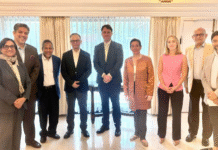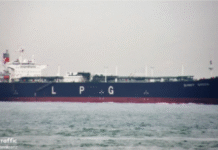
Over the last 20 years, Bangladesh consumed about 13 trillion cubic feet (TCF) of gas. During the same period, only less than two TCF of new gas reserve was discovered. The number of exploration wells drilled during this time was merely 22, implying an average of about one well drilled per year. This is a prime example, by any standard, of a very underexplored country which has seen major gas discoveries in the past and has been rated highly for further gas prospects.
With the world adopting the latest technological innovations in petroleum exploration, Bangladesh needs to open its door to invite and apply the marvels of the advanced technology to explore its true hydrocarbon potential. This view has been expressed by a pool of international geoscientists from Canada, USA, Australia, Bangladesh and other parts of the world with the common link among them being their Bangladeshi origin. The speakers met virtually on the “Mir Moinul Hoque Memorial Lecture Forum”, exchanging views on the state of gas exploration in Bangladesh as well as that of the advanced technology-driven exploration in the western world. Most of the discussants, who have years of experience in American and Canadian oil industries, opined that latest technology can change the way hydrocarbon exploration is being carried out in Bangladesh.
Speakers agreed that Bangladesh’s gas exploration has apparently been stalled because of a lack of dynamic vision. Exploration drillings are few and far between. Off-shore exploration has come to a standstill despite having bright prospects. Starting in the 1960s, the first phase of exploration, dealing with the easy targets known geologically as structural prospects, has been almost over. This has had several phenomenal successes in the past (Titas, Habiganj, Kailashtilla and Bibiyana gas fields, for example). But the drive into the second stage of exploration, with more subtle targets known geologically as stratigraphic prospects, has not taken place. A large area of Bangladesh plainland seemingly conceals numerous prospects of the latter type, according to the geological evaluation. Modern technologies like FPV study, as explained by the keynote speaker, for example, and horizontal drilling and fracking, as suggested by others, could bring major changes in the outcome of exploration.
The consensus of opinions has been clear: Bangladesh has to put an end to its extremely slow pace of exploration as well as the bureaucratic overlordship on the national exploration activities. Instead, the explorations have to be self-driven, more frequent and faster with increased linkages with international expertise.
While one cannot agree more on the above points, the realities on the ground appear grim. It is not difficult to understand why an aspirant geoscientist or engineer of Bapex (Bangladesh Petroleum Exploration and Production Company Limited) tends to lose confidence in the overall state of exploration and development management. “Is this the reward for our success?” he would ask, referring to the decision of the high-ups to remove Bapex workers from developing their own discoveries, Shahbazpur and Bhola North gas fields, in order to give those to Gazprom (reportedly not registered in Russia), a dubious foreign oil company, for development.
In 2015, it was announced that Bapex would drill 55 exploratory wells in five years—meaning 11 wells per year—breaking the long-drawn stalemate in exploration. The media hype and political rhetoric on this issue were supposed to be justified, because this could usher in a new scenario in Bangladesh’s gas exploration. But in reality, the number of wells drilled was 2 in 2016, 2 in 2017, and so on. In the five years since 2015, only 6 exploratory wells were drilled instead of the 55 wells announced. The programme was scrapped and Bapex workers went back to their den to await what comes next.
In 2016, Bapex drilled an exploratory well at Pabna named Mubarakpur well. Exploration drillers around the world know that it is not unusual to face a stuck pipe problem at some point during deep drilling, and accordingly, mitigation measures are prearranged. But Bapex was given just enough fund to drill the well and nothing to handle a technical emergency should a pipe get stuck. Over the course of drilling, Bapex identified a gas zone at a deep section of the well, but at one stage the pipe was stuck. This usually needs a remedial measure called side-tracking. Bapex did not have the small amount of fund required to do the job. To get the fund, it had to wait seven months during which time the fund-seeking file crawled from table to table in the bureaucratic wonderland before the fund was sanctioned. By the time the fund reached the drilling point, the gas zone was damaged due to overexposure in the open hole and the gas could not flow. This is probably the worst kind of emergency handling in a gas well ever known in the exploration business.
Nobody seems to have an answer as to why offshore exploration in Bangladesh did not kickstart even years after the maritime boundary disputes with Myanmar and India were resolved in 2012 and 2014, respectively. Based on the discoveries made in Rakhain offshore in Myanmar just adjacent to Bangladesh’s maritime boundary, geoscientists are highly optimistic about the prospects of large gas reserves in Bangladesh offshore, too. But there is no answer about what’s holding Bangladesh back from exploring its sea.
The government had done its share in giving Bapex a hand by providing funds for procuring drilling rigs and other essentials. It seems interested in developing a national workforce so that the national entity grows to take its share of responsibilities of developing the gas sector. But some quarters within the bureaucratic system play it the other way, perhaps so that businesses of their own interest prevail over the national interest. This group seems to purposefully try to undermine Bapex as well as other gas exploration programmes in Bangladesh.
Dr Badrul Imam is Honorary Professor, Department of Geology, University of Dhaka.









